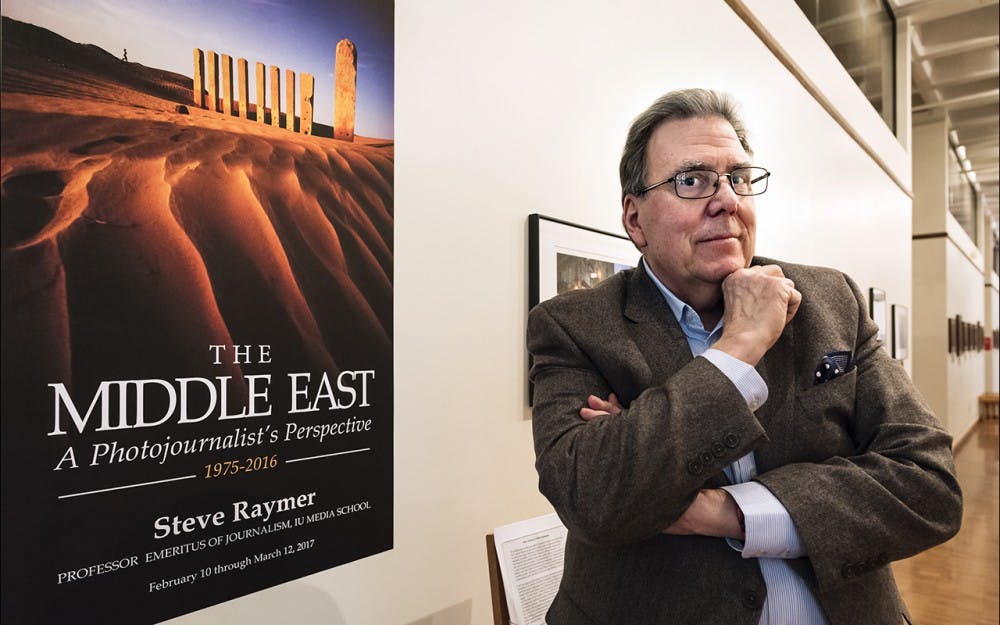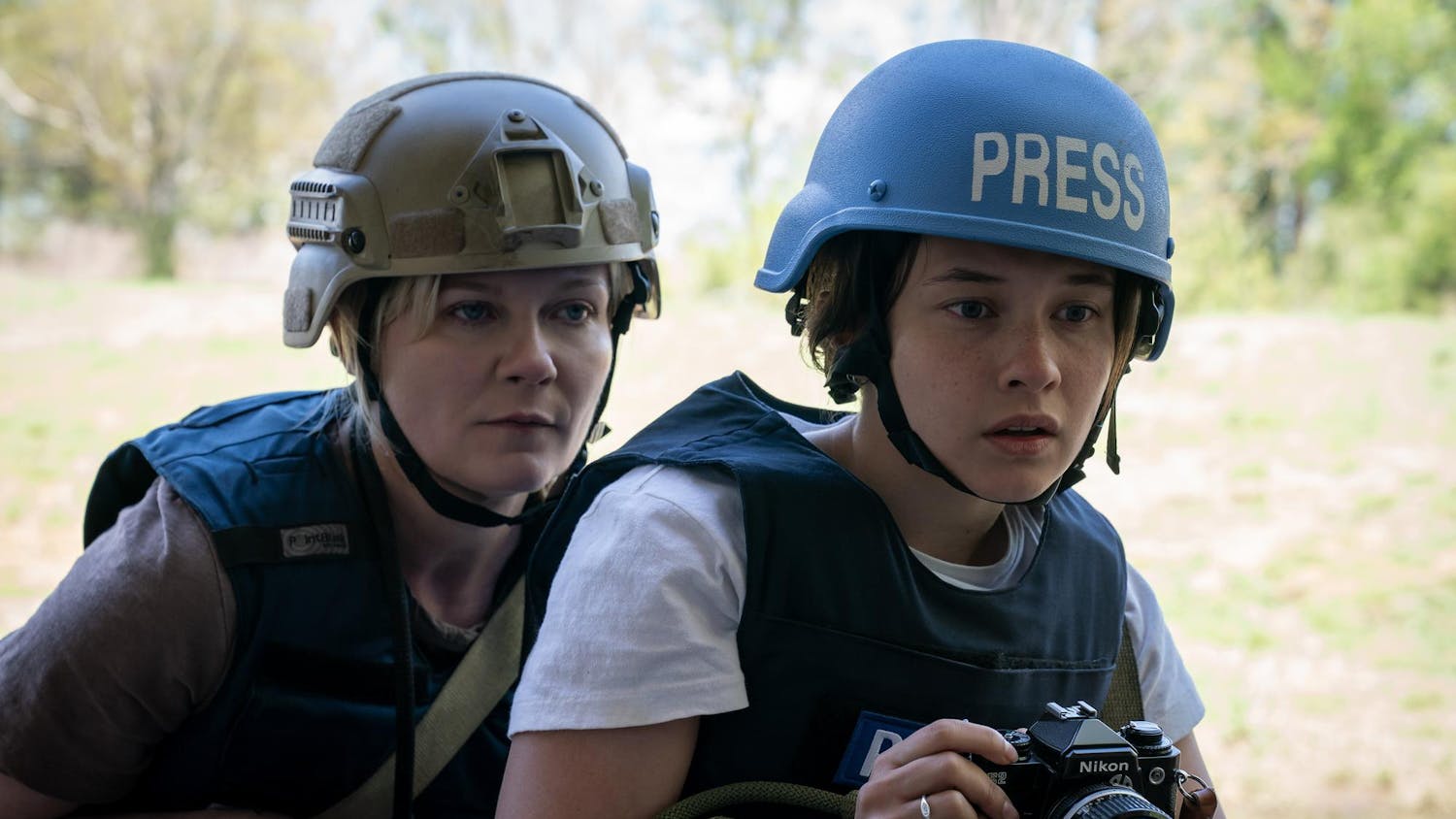Professor Steve Raymer first saw his photographs up at the Mathers Museum of World Cultures the day before the official reveal.
“It just looks fabulous,” Raymer told Sarah Hatcher, head of programs and education at the museum. “It looks so much better than I ever thought it could look. I had no idea you could fill up so much space with these pictures.”
Walking through the hallway, lined with photograph after photograph with subjects ranging from South Asian laborers in Dubai to a pack of oryx on the mountainside, Raymer described the context of each image from memory and from captions he had written while assembling the exhibition.
Raymer’s work, in a collection of photographs taken between 1975 and 2016 titled, “The Middle East: A Photojournalist’s Perspective,” will be on view from Feb. 10 through March 12 at Mathers.
He began taking the photos during his time as a National Geographic photographer and continued as he traveled back and forth to the Middle East.
“My goal with this show was to humanize and personalize this huge swath of land between Afghanistan and the Atlantic Sea coast,” Raymer said. “That’s about 5,000 miles, and that was my challenge.”
A more specific goal Raymer said he had in mind was to widen the breadth of the discussion surrounding the Middle East as it is viewed by some in contemporary society.
Humanizing an area normally associated with war is especially important at this historical moment, Raymer said.
“When we started to do this two years ago I never thought we’d be talking about the Arab-Muslim world in the same way we are today, with the same sort of passions and what Trump has done to our discourse,” Raymer said.
Hatcher said the photographs have the ability to disrupt or reshape students’ preconceived ideas about the Middle East.
Though some might view the area through a monolithic lens, by looking at Raymer’s photographs, viewers get to see the variety that exists across the landscape.
“The way he has managed to capture both traditional and modern aspects of the Middle East is very interesting,” Hatcher said. “I like that there is this juxtaposition of the expected and unexpected.”
The medium of photography allows for this human connection to the subject, Raymer said. Photography gives viewers the opportunity to visit places they may not be able to on their own.
“Visual language is the language of human emotion,” Raymer said. “We’re not using French or English or Arabic or Swahili. We’re using the language of the heart. So, in that sense, most everybody should get it because we’re trying to find intimacy with our pictures.”
Raymer said he emphasized to his own students, both at IU and at Zayed University School of Communications and Media Sciences in Dubai last semester, the power of seeing, understanding and feeling based on the original motto of Life Magazine.
“If you strike an emotional chord with the people who are looking at your pictures, you’ve done a pretty good job. You’ve succeeded,” Raymer said. “Hopefully that picture tells a story, the sheikh there getting his coffee at the camel races, or the Arab who loves his camel, or the girls here who walk between two cultures, literally, in their lifetime.”






